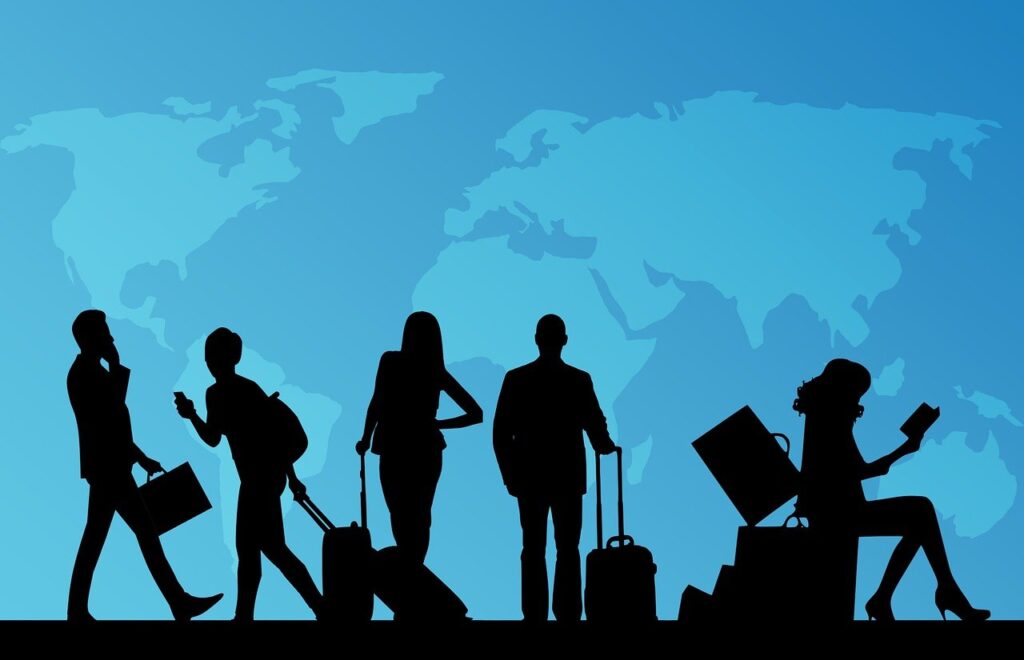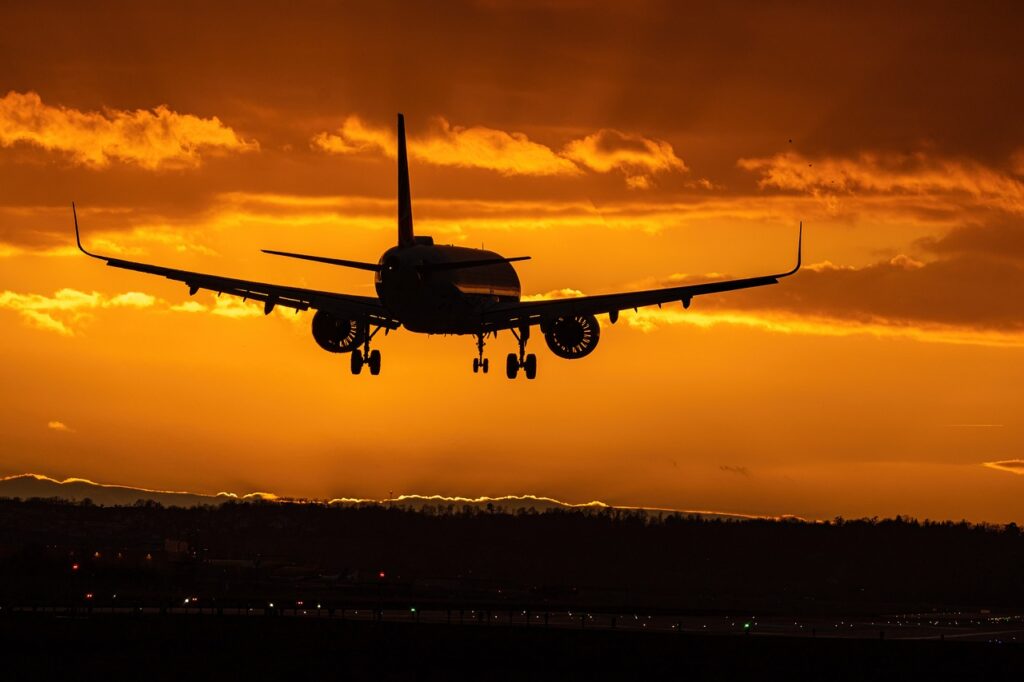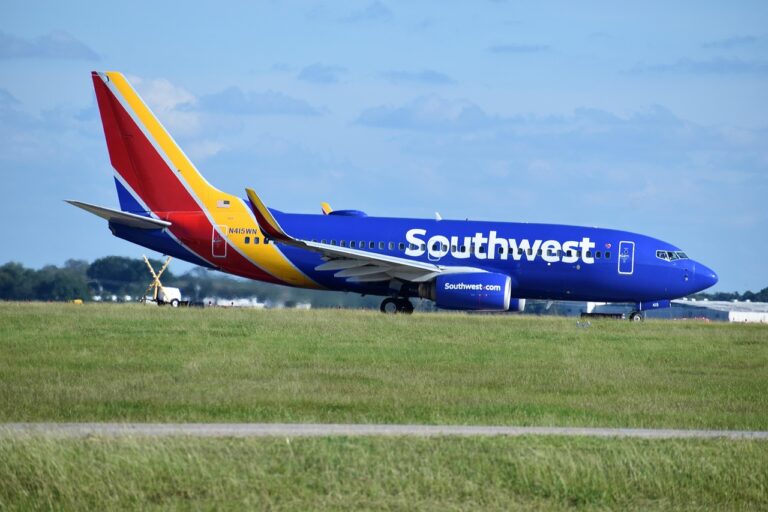Last Updated on April 3, 2024 by ETC Team

It’s important to know that each airline has its own restrictions on how large your carry-on luggage can be. Whether you’re consciously keeping your packing to a minimum or supplementing your checked luggage, it’s important to keep Transportation Security Administration (TSA) carry-on luggage size in mind when packing a bag and heading to the airport. Below we’ll cover the most important airline and TSA carry-on guidelines.
Bottom line, not all airlines allow full-size carry-ons for free, and most have slightly different rules on what size those bags can be. You don’t want to get all the way to the gate just to find substantial baggage fees and inconvenience are waiting.
Here’s what you need to know about airline and TSA carry-on size allowances.
Airline-specific carry-on luggage rules
Alaska Airlines
On an Alaska Airlines flight, you can bring a carry-on and a personal item for free.
Carry-on bags are limited to 22 inches long, 14 inches wide and 9 inches high including wheels and handles. All three measurements shouldn’t add up to more than 45 inches.
For personal items, Alaska offers examples of a purse, laptop or briefcase.
Alaska doesn’t list weight limits, but it says that passengers should be able to lift items that go in an overhead bin.
American Airlines
For an American Airlines flight, passengers get one personal item and one carry-on, no matter what type of fare is bought (elite members included).
Carry-on bags shouldn’t be larger than 22 inches long, 14 inches wide and 9 inches high including handles and wheels.
Dimensions of personal items should not exceed 18 inches long, 14 inches wide and 8 inches high.
There are no weight restrictions for carry-on luggage.
Delta Airlines
Delta flyers are allowed one carry-on bag and one personal item.
Including wheels and handles, measurements may not exceed 22 inches long, 14 inches width and 9 inches high. The total length plus width plus height of baggage must not exceed 45 linear inches.
For personal items, Delta says size examples are purses, small backpacks and laptops.
Three places have weight limits: Beijing (10 kg, about 22 pounds), Shanghai (10 kg, about 22 pounds) and Singapore (7 kg, about 15.4 pounds).
Frontier Airlines
Frontier Airlines charges for both checked luggage and carry-on bags, and the price depends on the route you fly. It also varies depending on if you buy the bags before via the web or mobile app, at the ticket desk, or the boarding gate.
Carry-on bags must weigh less than 35 pounds and must not exceed 10 inches deep, 16 inches wide and 24 inches high. Bags must fit in the overhead bins.
Checked bags must be no longer than 62 linear inches (length + width + depth) and must weigh under 40 pounds. Bags weighing more than 40 pounds will incur additional charges per bag per direction. Bags weighing 41-50 pounds will cost you $50 more and bags weighing 51-100 pounds will cost $100 more.
Personal items cannot exceed 8 inches deep, 18 inches wide and 14 inches high.
Jet Blue
Not all JetBlue passengers are permitted the same carry-on items. Passengers who bought Basic Blue fares get one personal item (except Mosaic customers who always get a carry-on). Blue, Extra Blue, Blue Plus and Mint fares allow one carry-on and one personal item.
Including wheels and handles, length, width and height measurements may not exceed 22 inches long, 14 inches wide and 9 inches high.
Personal items can be no more than 17 inches long, 13 inches wide and 9 inches high or smaller to fit under the seat in front of you.
There are no weight limits for carry-on luggage on JetBlue.
Southwest Airlines
Southwest is known for having a generous free checked luggage policy, but carry-on restrictions are similar to most other airlines — one personal item and one carry-on per traveler.
Carry-on measurements should not exceed 24 inches long, 16 inches wide and 10 inches high.
Personal items are limited to 18.5 inches long, 8.5 inches wide and 13.5 inches high.
Southwest doesn’t list weight limits for carry-on items.
United Airlines
Most travelers flying with United can bring one carry-on and one personal item, but if you’re traveling on a basic economy fare, you’re allowed one personal item only (unless you’re a MileagePlus Premier Member, are traveling internationally or have a MileagePlus credit card, like the United℠ Business Card.
Including handles and wheels, the maximum dimensions for a carry-on are 22 inches long, 14 inches wide and 9 inches high.
Personal items are limited to 17 inches long, 10 inches wide and 9 inches high.
As of this writing, United doesn’t publish weight limits for carry-ons.
Depending on the airline you fly with as well as how long you’re traveling for, you might wonder whether you’re better off traveling with a checked bag rather than a carry-on. This can be especially relevant if you’ve packed some liquids with you that exceed the TSA carry-on liquid limits.
TSA Liquid Limits
Before you even make it to your departure gate, you have to clear a TSA checkpoint. This means you must adhere to the TSA liquid limit in order to make it through security.
How many ounces are allowed on a plane?
Containers that are 3.4 ounces or less are allowed, but there are other rules to keep in mind as well.
Carry-on liquid limit
The TSA liquid rule — also known as the 3-1-1 rule (3 ounces, 1 bag per 1 person) — is straightforward: “You are allowed to bring a quart-sized bag of liquids, aerosols, gels, creams and pastes in your carry-on bag and through the checkpoint. These are limited to travel-sized containers that are 3.4 ounces (100 milliliters) or less per item.” Any liquids in larger containers will have to go into checked baggage (and are subject to overweight fees).
A basic clear, zip-top container qualifies as an eligible quart-size bag for passing through security.
Let’s Make Things Simple: The easiest way to manage the amount of fluids in your carry-on is to start with containers that are no larger than 3.4 ounces or 100 milliliters and your quart-sized bag.
The maximum carry-on liquid size and amount will depend on how much you can fit into your single quart-sized bag.
3-1-1 liquids rule exemptions
The 3-1-1 liquid rule has several exceptions if you’re traveling with certain liquid medicines or baby food.
Medication
TSA allows larger amounts of certain medically necessary liquids, gels and aerosols in “reasonable quantities” for your trip. The amount allowed is not stated.
The only catch? You must declare the medication to TSA officers at the checkpoint for inspection, alongside any accessories associated with your medicine, such as freezer packs or syringes.
Let’s Make Things Simple: Labeling your medical items can help facilitate the screening process.
Baby food
Formula and breast milk are considered medically necessary liquids, and thus exempt from the carry-on liquid limit. Water and juice for babies is also allowed in quantities greater than 3.4 ounces or 100 milliliters.
These child and infant nourishment items are allowed in carry-on baggage and do not need to fit within a quart-sized bag. You may also bring teethers that are gel- or liquid-filled and canned/jarred/processed baby food in your carry-on baggage.
Duty-free liquids
The final exemption to TSA liquid limits apply to duty-free liquids purchased during inbound international flights. It’s important that these bags are secure and temper evident and stored in a transparent bag.
Be sure to keep the item’s original receipt handy in case a TSA officer asks to see it.
Additional TSA carry-on rules
Flammables
The only flammables allowed in a carry-on are cigars, cigarettes, disposable and Zippo lighters, and dry batteries (like AAs or AAAs).
Camping and sports equipment
You can carry-on an air mattress with a built-in pump (by following special instructions), antlers, basketballs, footballs, baseballs, soccer balls, bike chains and bike pumps. Bicycle allowances vary by airline, but baseball bats, bear spray and bear bangers are never allowed — nor is aerosol insecticide.
Other items
There are some banned items, including knives, firearms and box cutters. A full list of which can be found on TSA’s website.
The Wrap

No matter which airline you fly with, first make sure you know what size carry-on you’re allowed to bring onboard and are also familiar with (and prepared for) TSA’s carry-on restrictions. You can actually reach out to the AskTSA team by sending a message via Twitter or Facebook Messenger. With a little research and preparation, you can expect a smoother and less stressful airport and airline experience. We can all appreciate an easier travel experience that allows us to Explore, Travel, and Connect.




[…] fitting all those tiny plastic bottles of liquids in a carry-on bag can put stress on even the most seasoned […]